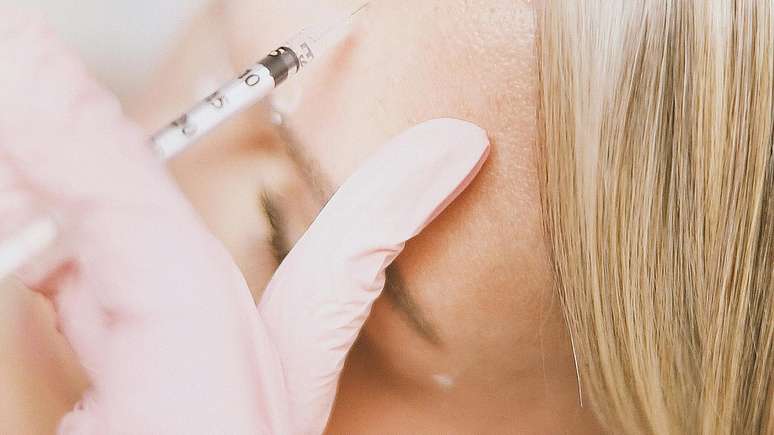Experts explain what to do before, during and after sun exposure to avoid damage to your health
Brazil is experiencing one of the hottest periods in its history, with temperatures reaching 50°C in several regions of the country. This extreme increase in heat not only causes discomfort, but also has serious implications for the health of your skin and hair.
“Solar radiation causes the degradation of collagen, leading to the premature appearance of sagging and wrinkles. Furthermore, unprotected sun exposure can cause blemishes, such as melanosis and melasma, and increase the risk of skin cancer”, explains dermatologist Dr. .ssa Paola Pomerantzeff, member of the Brazilian Society of Dermatology.
Effects of the sun on hair
Hair is also damaged by solar radiation. “Contrary to what many people think, because hair is a dead fiber, it suffers the harmful effects of the sun’s rays. UVB rays damage the hair cuticle […] So, when the cuticle is damaged by the sun, it exposes the deeper layers of the hair, as well as becoming dry, hardened and shrunken,” explains Dr. Lilian Brasileiro, medical specialist in Dermatology.
As a result, as the doctor explains, the strands lose moisture and the color fades, leaving the hair dull, weakened and brittle. “Another thing that the sun does is significantly increase the production of oil by the seborrheic glands of the scalp. And, therefore, it makes the scalp oilier, with a greater tendency to develop seborrheic dermatitis”, explains the professional .
Care to include in your routine
With some precautions, which must be adopted before, during and after exposure to the sun, it is possible to maintain your health and the beauty of your skin and hair even in summer. Watch!
Before
1. Sun exposure program
Planning your sun exposure times in advance is a great way to reduce the damage caused by solar radiation. “[…] UVB radiation is most intense in summer, especially between 10:00 and 16:00. And since this radiation is responsible for causing burns, redness and damage to the epidermis, the ideal is to avoid exposing yourself to the sun when it is most intense”, explains Dr. Paola Pomerantzeff.
two. Sun protection is essential
Regardless of the day, time, season or location, there is nothing more important before exposing yourself to the sun than applying sunscreen. One recommendation is to use sunscreens with a protection factor (SPF) of at least 30, according to Dr. Paola Pomerantzeff.
Don’t forget your hair: “As a general rule, we apply sunscreen on dry hair 20 minutes before exposure to the sun; if we go into the water, preferably half an hour, 40 minutes before, so that the product dries a little ‘ on the hair, “adds Dr. Lilian Brasileiro.

During
3. Reapplication of sunscreen
Remember that it is not enough to apply sunscreen just once before exposing yourself to the sun. “It must be a product with at least SPF 30 and must be reapplied every two hours – and every time you go out to sea. Accessories such as caps, hats, glasses, UV protective clothing must also be used. But the most important thing is avoid excessive and direct exposure”, explains Dr. Danilo S. Talarico, Doctor of Clinical-Surgical Dermatology
As for hair, Dr. Lilian Brasileiro reminds us that hair protectant must be reapplied every time you enter the water or practice any activity where you sweat a lot.
4. Be careful with fruit citrus fruits
Hydration of the body is one of the most important precautions during sun exposure and can be done through juices, where fruit manipulation is necessary. In this context it is necessary to be careful when handling these citrus fruits, as they can cause stains.
“[…] In this case, the contact of the juice of the peels of these fruits with the hands causes spots or burns on the hands and in the areas touched by them”, explains dermatologist Ana Maria Pellegrini, member of the Brazilian Society of Dermatology. Dermatosis occurs in areas of contact with these substances and which receive solar irradiation.
“They typically appear within the next 24 hours, promoting an inflammatory process, and are characterized by burn-like erythema, possibly with the formation of vesicles and blisters, depending on the intensity of the reaction […]”, warns the professional.
5. Stay in the shade
Even with proper application and reapplication of sunscreen, it is important to reduce sun exposure as much as possible. “Try to stay in the shade, use an umbrella, and wear clothing and accessories, such as sunglasses and hats, made with ultraviolet protection,” advises Dr. Paola Pomerantzeff. However, remember that these physical barriers only support photoprotection and are not sufficient on their own, and must always be associated with a photoprotector.

After
6. Hydration for the skin
Hydration is one of the most important steps to recover from sun damage, as it reduces water loss and ensures a healthier appearance to the skin, leaving it soft and preventing flaking, according to Dr. Paola Pomerantzeff. Soothing products formulated with vitamin E can be used.
“But be careful with moisturizers called aftersun creams, because some have a thick, oily consistency that creates an emollient barrier on top of the skin, trapping heat in the top layer of the epidermis and exacerbating inflammation and burning sensations. Also “Some of the fragrances and chemicals in these products can irritate damaged skin,” says the doctor.
7. Hair hydration
For hair, we recommend using a hair mask in the shower, always applied before conditioner to recover your hair. “This is because conditioner closes the cuticle of the hair strands. If the mask is applied after conditioner, it will not be absorbed. Leave it in it is also welcome. […]”, says Dr. Paola Pomerantzeff.
By Maria Paolo Amoroso
Source: Terra
Rose James is a Gossipify movie and series reviewer known for her in-depth analysis and unique perspective on the latest releases. With a background in film studies, she provides engaging and informative reviews, and keeps readers up to date with industry trends and emerging talents.






